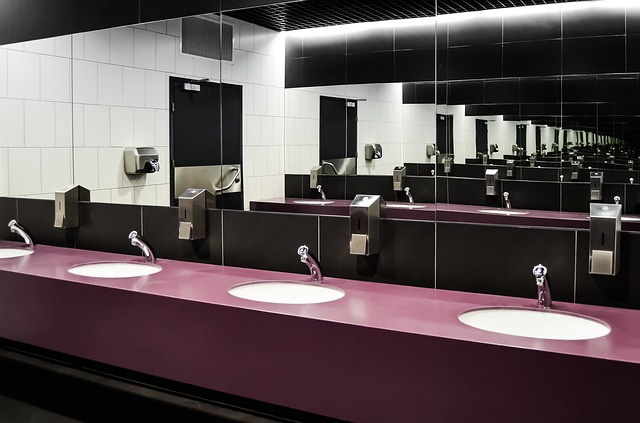The bathroom in your commercial building can be a safety issue and a liability if it is not maintained properly. The Occupational Safety and Health Administration has created plenty of rules about bathroom accessibility for employees (including Americans with Disabilities Act ADA requirements). However, there are many maintenance issues in which an owner must use due diligence to ensure bathrooms are staying safe even after a bathroom is properly built by companies like BMarko Structures. One of the goals of this diligence is to prevent commercial bathroom mold.
Mold in buildings is a common problem because mold is everywhere, and you cannot really prevent it from entering any normal building. However, you can prevent it from growing. Mold needs moisture, warmth, and air stagnation in order to take hold and colonize within your commercial building
Regular maintenance should be scheduled to ensure a commercial bathroom is not falling into disrepair and becoming an environment that attracts mold. The commercial bathroom is unlike a residential bathroom in that maintenance may be overlooked to an extent that is unhealthy and dirty. Even people who are hired to clean can become complacent. Here are a few things to watch out for to prevent mold.
Preventing Commercial Bathroom Mold
1. Ventilation
The fan in the bathroom needs to work properly. Anywhere there is moisture, there needs to be ventilation. This is especially true in commercial bathrooms that have showers. The hot steam from a shower can be a gift to a mold colony if not allowed to properly vent to the outside of the building. Repair broken ventilation fans as quickly as possible. A window can serve as added ventilation, but a proper ventilation fan is recommended due to inclement weather possibilities. If mold is a problem, a dehumidifier will reduce the mold risk by removing moist conditions caused by lack of ventilation.
2. Water leaks
Under the sink is a common place to find mold because leaks can go undetected for so long. Behind the toilet is the same way. Inspections should occur regularly to make sure leaks are detected as soon as possible.
3. Temperature control
Mold grows well in temperatures above 70 degrees Fahrenheit and very well at temperatures approaching 80 degrees. That doesn’t mean you need to keep your commercial bathroom frigid, but turning down the temp when the building is unoccupied and setting timers on heaters can reduce the risk of mold.
Simply being aware of the risk of mold and what causes it to grow in a commercial building can help a person to use his or her intuition to come up with solutions to mold growth. The key is to regularly maintain and inspect all areas of the building.
